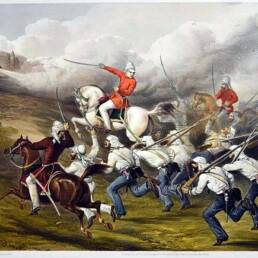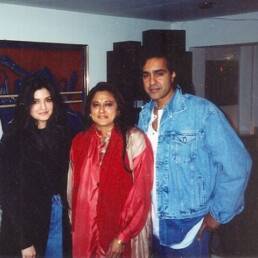Did you like the movie Qala? Well, we’ve got an interesting tidbit for you that will transport you to a parallel world of the Nazi regime, that you probably missed. Wonder how? Gather around for a story.
Set against the vibrant backdrop of 1940s Calcutta, Qala revolves around a singer’s quest for success and her overbearing mother who can’t shake off their troubled past. This film subtlyintertwines emotions, struggles, and societal issues , leaving the viewers mesmerised
But, why are we even talking about this movie, you ask? Well, it’s all because of the killer track Ghodey Pe Sawaar. With Sireesha Bhagavatula killing the vocals, when we saw the music video, we found a brilliant hidden story.
The tune takes you on a fast paced trip back to the swinging 1940s, with all the glitz and glamour of fame and music. But in a blink-and-you’ll-miss-it moment, you catch a glimpse of a guy tickling the ivories on an old accordion. And that’s where our story begins.

If you pause the frame there, you can just about make out the manufacturer’s name, which reads “OHNER” – or does it? In fact, it’s the world-renowned HOHNER, makers of top-quality musical instruments since in 1857.
HOHNER, a company born in a small German village, first became famous for their harmonicas, but it wasn’t until 1903 that they broadened their horizons and began making accordions. And by the onset of WW1 they were among the world leaders.

With an all-out marketing blitz, accordions stormed the music scene and Hohner emerged as the undisputed master. In India, they’re a go-to instrument for movie soundtracks and often feature in live performances and popular tunes.
Hohner had a burning desire to raise the status of piano accordions to a prestigious classical music concert instrument. This caused a surge in demand for bandoneon groups throughout Germany. Their music harmonised with the plight of the labourers.
And that was of great concern to the Nazi regime. Cultural associations that once thrived were considered dangerous in 1935 and were swiftly banned. The powers that be were on a mission to suppress any influence that might threaten their rule.

The Nazis took away the instruments. They only liked loud, triumphant music and didn’t care for the sweet, sad sound of reed instruments. They preferred music with lots of marching and fanfare, and big orchestras playing powerful tunes.
The accordion’s growth took a major hit. Propagandists alleged that the accordion was a jazz instrument because of its association with contemporary American dance music and were considered as an affront to the music created by their revered masters.

Hohner took drastic measures to withstand the impact of the market collapse. During the war they made military gear, specifically detonators, for the Nazi army in their factory. Additionally, they created harmonicas with Nazi Swastikas imprinted.
They wrote letters to the Third Reich, trying yo persuade them that accordions were a genuine German instrument. They also wrote that banning the instrument would result in thousands of German music teachers losing their livelihoods.

Against all odds, the Hohner instrument and its company persevered through adversity. Despite being banned by the Nazi regime, the instrument not only survived but eventually became a tool of their propaganda machine. Every frame tells a story.
Sources:
Helena Simonett, The Accordion in the Americas, University of Illinois Press
Paul Garson, New Images of Nazi Germany, A Photographic Collection, McFarland, Incorporated
Image Attributes :
Netflix India Official Music Video, https://www.youtube.com/watch?v=q05AbgNey6w&ab_channel=NetflixIndia
The Harmonica Guy, http://www.harmonicaguy.com/newfind.htm
Triangle tangle: How Sangam still appeals,




